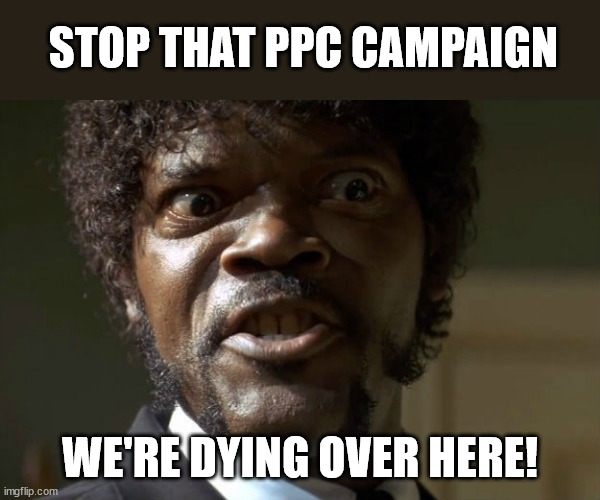Client: A social/collaboration/entertainment website
Service: Online Competition Analysis, Rank Improvement Strategy
Delivery Time: 1 week
A few days ago I was contacted by a social-type of a startup that has been struggling to continue developing the website mostly because their fundraising is very slow. They took a wrong turn with developing their Site A and got some bad press on Site B that spread like wildfire and lingers on for years even though all the mentioned issues have been dealt with.
The management is now at a stage of development where they have to do something about this bad press. I was asked to run a competitive analysis on Site A and Site B and set some figures as to what it will take in terms of money and online activity to basically outrank Site B.
The goal, therefore, was clear: what will it take in terms of online activity to outrank this website on a global scale.
Analysis Methodology
Evaluating the ranking potential for Sites A and B took into consideration their Backlinks and Content capital. Since I have no details about Site B’s traffic and costs related to building their ranking capital, I used three other sites that I am closely familiar with and know the content and backlinks capital as well as the dollar count for these sites to achieve their online capital and how much organic traffic they get. So the suggested dollar and content figures suggested below are interpolations between the statistics of the analyzed sites.
Site A Ranking Potential
The first step was to evaluate Site A Referral and Content capital and compare it to traffic estimates in order to get to a clear, data-based and actionable diagnosis.
Site A Referral Traffic
This startup’s website is relatively new. Registered in 2008 and with most of the backlinks fall in the personal profile links people shared on their other social profiles and blogs. Although the link count is substantial, these links don’t carry too much weight to counteract the bad press from Site B.

Site A: Plenty of links but not too much weight to them (Ahrefs)
The image above helps in seeing that there’s solid link density per referring domain (on average 50 backlinks per referring domain). With so many links it is safe to assume that the referring sites are affiliated to Site A, most probably websites/blogs owned by members of Site A.
There is an interesting correlation between the number of referring websites (1300+) and the count of people that Tweeted/Liked Site A (ABOUT 1400) that backs up the assumption that these 1300+ people are responsible for 99% of all the web buzz around Site A. Google’s Panda and Penguin updates targeted sites that have unnatural referral portfolios, and this site got hit very hard, which is visible in the next image.
(NOTE: The Top Referring TDLs graph is logarithmically adapted so pay attention to the actual links count. There are 10 times more COM links than NET links even though graphically it seems like the COM vs NET difference is about 30%.)
Site A Organic Traffic
Below is an overview of the site traffic. Note that in 2010 was a good year for Site A. They got about 7000 (interpolated figure) monthly visits from Search, which dropped to 800 in 2012, and is now below 10 monthly visitors from Google.

Site A: Search Traffic hit a high and then Panda ate it all (Semrush)
Site A Wrap-up
This site has plenty of active members that are trying to pick up the pace but their activities were all wiped out by the Panda and Penguin updates Google implemented over the past year. Site A Management will have to undertake a paradigm shift if they want to make it online, starting with installing Google Analytics on their site and move away from simplistic marketing tricks that worked a long time ago. Site A will have to make heavy investments in Content Development to overcome the overly obvious disparity between Referring vs. On-Site activity.
Site B Ranking Potential
Now let’s take a look at the Referral and Organic stats for Site B and see what this bad-press website does right to outrank Site A for over two years now.
Site B Referral Traffic
Below is a screenshot of the Referrals vital statistics: backlink and social signals count. Keep in mind that the TDL chart below is logarithmically adapted and even though the COM backlinks seems to be only 25% larger than the NET link count, in reality, there are almost 10 times more COM backlinks than NET backlinks.

Site B: Less link count, but higher quality and better dispersion (Ahrefs)
The link count is significantly smaller than Site A (over 50% fewer backlinks count), but the number of referring domains is 60% greater compared to Site A. So a simple math reveals that Site B has about 110% better backlinks portfolio which makes it significantly more natural and therefore resistant to the Panda and Penguin updates Google launched over the past year.
The social signals are incomparably fewer (3458 for Site A vs only 41 social signals for Site B) but that seems to have very little effect on Site B’s strong position on Google.
Site B Organic Traffic
With a 110% better link portfolio, Site B will most definitely have better organic traffic profile too. Let’s just see if it will correspondingly be 110% better than Site A.

Site B: Content-rich and categorically better organic traffic
Here is the crux of the matter and what most serious SEO consultants have been talking about since the beginning of time (Google’s time, that is): Content rules. It is far more effective than link count and greatly overshadows social signals as far as organic traffic is concerned.
Based on comparative data from the three other websites, Site B gets roughly 220.000 (interpolated figure) monthly visits from Google.
Site B Wrap-up
Site B has a 110% more natural link and social signals portfolio. It is packed with content. It has 560 times more content. Combined, the off-site and on-site activity works together to gain about 220.000 monthly visitors from Google alone.
How Site A Can Outrank Site B
Let’s get the stats in one place:
| Link Count | Referring Sites | Social Signals | Organic Traffic | Content Count | |
| Site A | 55.246 | 1366 | 3458 | 10 | 1 |
| Site B | 32.718 | 2861 | 41 | 220.000 | 561 |
Where stats get really interesting is with the crawlable URLs count. Site A has only 1 indexable page of 500 bytes. Site B has 483 Forum pages (with an average of 10 comments per page) and another 78 articles, adding up to 561 unique pages and 4800 user-generated content pieces with an average URL size of 7KB.
By extrapolating Referral and Organic stats from the three other sites, Site A needs to go after an aggressive Content Marketing approach that will need to counteract all the bad Referral practices (counteract Panda and Penguin) and only then try to outrank Site B.
Based on the extrapolations, the estimate is that over the next 12 months, Site A will need to get their 1300 active members to each to produce 78 solid content pieces on Site A targeting the pre-selected keyphrases that they want to outrank Site B. That’s roughly 2 blog posts per week per member. In dollar terms, if Site A is to hire content developers, they would need to spend about $2 million in order to outrank Site B.
Interested in a competitive analysis like this one for your business?






